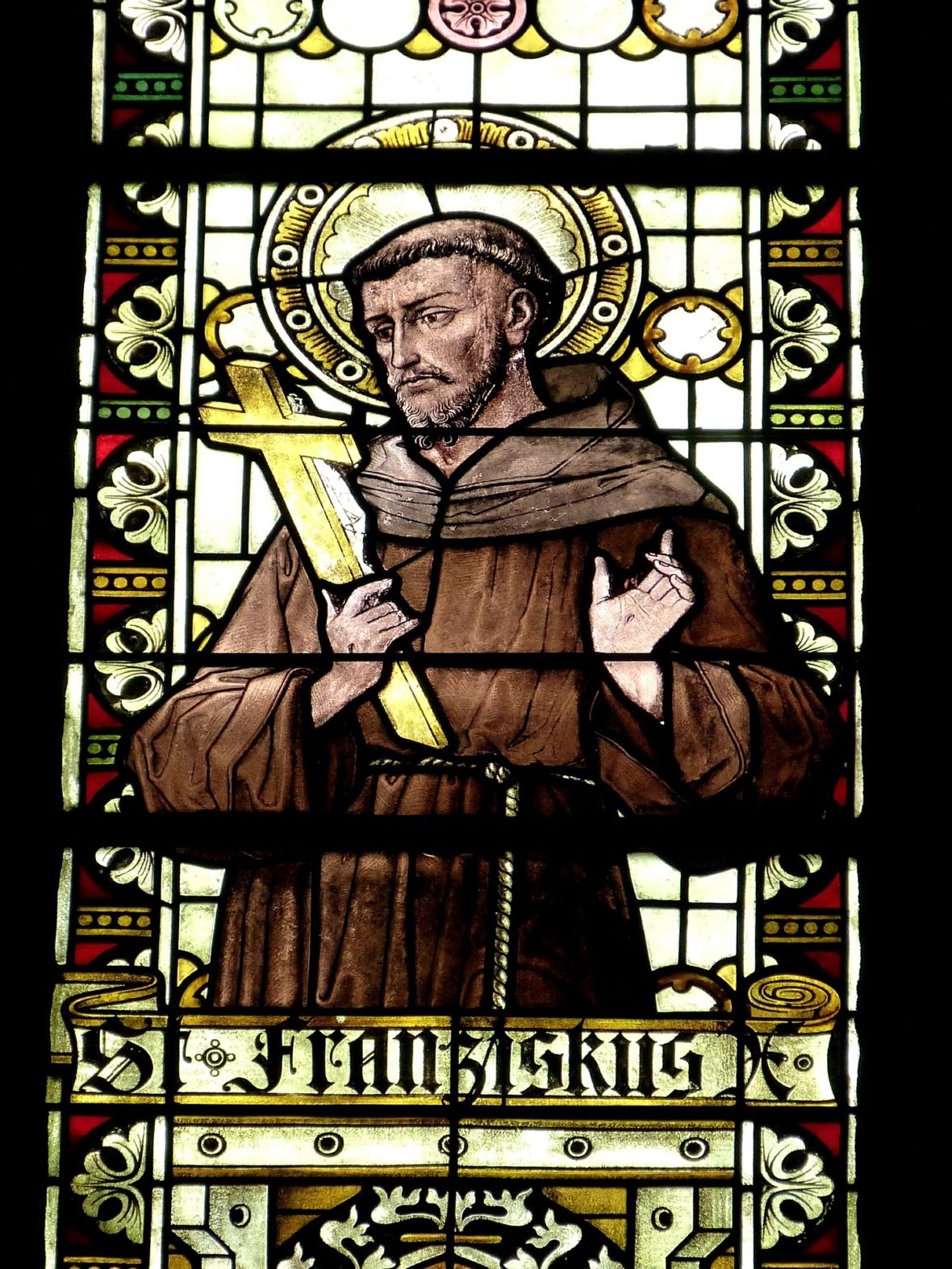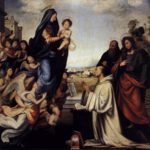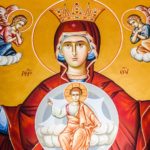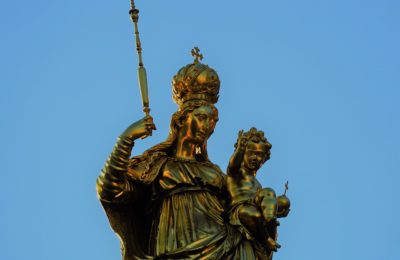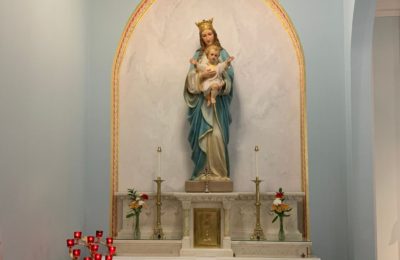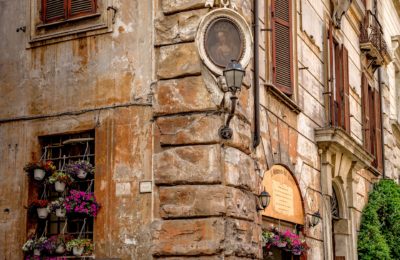In May of 2018, I presented a piece about the golden thread of Marian devotion which has been weaved throughout the Franciscan Order. In this piece (read here) I addressed the work of the Franciscan priest and scholar, Fr. Peter Damian Fehlner (b. 1931- d. 2018). Fr. Fehlner was an expert on the golden thread: it was his life’s work, and bore much fruit. The other day, I came across an article which summarizes the work of Fr. Fehlner which I think you will find interesting. The article is titled The Marian-Franciscan Legacy of Fr. Peter Damian Fehlner, and was written by J. Isaac Goff. The article was published in the July edition of Missio Immmaculatae. A pertinent excerpt follows:
The Role of Charity in the Ecclesiology of St. Bonaventure was originally his doctoral thesis at the Pontifical College of St. Bonaventure. Published in 1965, this work remains the standard treatment of Bonaventure’s understanding of the Church. In this early work, we already see the seeds being planted for Fr. Peter’s later synthesis of Franciscan and Catholic dogmatic theology. Fr. Peter explains: “The role of the Church as a sign and sacrament of everlasting life for her members tends to make of the Church an instrument, rather than the realization of salvation itself.”[9]
Fr. Peter writes: “Bonaventure affirms unequivocally that the bond of unity in the Church is charity,” and that “through… charity we are all united…”[10]
This sacramental role of the Church is determined by Christ in its very foundation as expressive of the love of the Father for humanity with a continuing distinctly Marian character. It is the very flesh that Mary gave Christ and the sacred humanity that she nurtured and protected which is made present and offered in every sacrifice of the Eucharistic Liturgy. It is Mary’s love for the Father and Christ that made the Church possible through the Incarnation, and it is this same love enfleshed that makes the Eucharistic Church. If the Church is the sacrament and instrument of salvation, it is the Eucharist offered that is our salvation through the Church. For the Eucharist is the effectual sign and reality of the loving communion between the Father and all humanity in the Marian-sourced flesh of her own and of our Savior and God, Jesus Christ.If the sacrifice on Calvary of the flesh given to Christ from His Immaculate Mother and re-presented daily to the Father in every Catholic mass throughout time and space is the price that love pays for our reconciliation with the Father, it is Mary and the Holy Spirit, the created and uncreated Immaculate Conceptions, who cooperate with the High Priest in fecundating and fructifying this sacrifice of love in the Church and in the hearts of the all the faithful. As Fr. Peter explains regarding the mission of the Son: “in virtue of the Incarnation the flesh [the entire humanity of Christ] becomes the sign and instrument of the salvation of the Spirit, the visible of the invisible, the human of the divine; in turn the divine is manifested in and through the human, indeed the flesh and the body. For this reason, the sacraments by which the Church is founded and formed come forth from the side of Christ; they are the continuation of this mystery of mediation.”[11]
The mission of the Son finds its counterpart in the mission of the Holy Spirit having his visible primary term and manifestation in his Spouse, Mary, the Immaculate Mediatrix. Fr. Peter explains the unique coordination and relation between the Holy Spirit and Mary on the basis of her exclusive dedication to the work of the Holy Spirit in accomplishing the Incarnation and establishment of the Church, and effecting charity as the formal bond of union in Christ’s Body, the Church. Because the Blessed Virgin Mary is filled with the grace of the Spirit, she participates in a singular manner in the eternal fecundity of the Father. This participation is precisely signified through her Virginal Maternity in bringing forth the man-God, Jesus Christ. However, her union with the Spirit is so profound that she continues with the Holy Spirit, the second advocate with the Father after Christ, in accomplishing “the work of the Holy Spirit… fundamentally a union of charity.”[12] For, as Fr. Peter explains: “The role of charity in the Church is to unite her, to make of her a communion, because the nature of the charity is communicative; and because the nature of the Church is ultimately resolved into a participation in the life of the Trinity, her inner unity is above all one of charity.”[13]
In his final great study of St. Maximilian Kolbe’s theology,[14] Fr. Peter places the final capstone upon his ecclesiological vision, fully integrating Christo-typical and ecclesio-typical theological models of Mariology. He is able to accomplish this because of his Franciscan theological metaphysics that locates the primary agency and activity in the realm of persons. First, the Father eternally begets his Son and, through his Son, gives the Holy Spirit. Second, in creation this fecund charity is found in Mary, actively participating in every phase of her Son’s sacrificial and salvific mission.
Because Mary is the created Immaculate Conception, she is always actively, directly, and personally exercising a maternal and mediatory role. First, she gives birth to the Head of the Church, the true Son of the Father now really established in creation; and second, she is Mother of all those adopted as children of the Father and brothers and co-heirs with Christ. Because she is the Immaculate, divine Mother, assumed into heaven, Mary uniquely and perfectly is what the Church, the Body of Christ, is called to become in its full maturity. Because of her continued spiritual maternity, Mary, as the created Immaculate Conception, is the means by which the kingly promises to David fulfilled in Christ, come to full fruition in history through the Church. It is through the triumph of her Immaculate Heart that the kingship of Christ, a kingdom formally characterized by love, can be fully established.
In this way, Fr. Peter can show just how correct St. Maximilian’s call for total consecration to Mary, under the title of Immaculate Conception, was for the transubstantiation of souls into Mary, the created Immaculate Conception, so as to be perfectly conformed to and established in the Uncreated Immaculate Conception, the Holy Spirit, via the personal agency and advocacy of the Immaculate Mediatrix. In very practical terms, Fr. Peter provided the metaphysical and theological rationale for the total incorporation of the Immaculate Conception into the whole life of the Church and its members, whereby the Kingship of Christ would be fully accomplished and perfected through the triumph of the Immaculate Heart of Mary in the Church and in the world, for all eternity. (source)
The entire article may be read at the source noted above.
There are also numerous videos of Fr. Fehlner on YouTube which are quite instructive. An example of one video is:
May you have a good day.
~SCF
~Image: St. Francis of Assisi, founder of the Franciscan Order.

